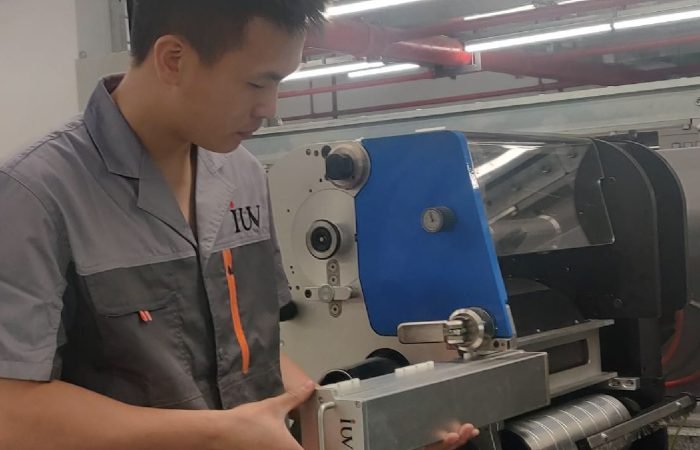LED UV curing systems are the backbone of modern label, flexo, offset, and narrow-web printing. When these systems falter, print quality drops, production slows, and costs spike. Let’s cut through the jargon and dive into five no-nonsense maintenance strategies to keep your UV curing performance rock-solid.
1. Clean Optics Like Your Print Quality Depends on It (Because It Does)
LED UV lamps rely on precision optics to focus energy onto substrates. Dust, ink mist, or debris on lenses or reflectors scatters UV light, leading to incomplete curing—especially problematic in high-speed label printing.
- Action steps:
- Wipe lenses weekly with lint-free cloths and optical-grade cleaner.
- Inspect reflectors for coating degradation (common in humid flexo environments).
- Check for resin buildup on narrow-web press lamps after adhesive-heavy jobs.
Pro tip: Schedule cleanings during printhead maintenance to minimize downtime.
2. Monitor Heat Like a Hawk – Yes, Even with “Cool” LED Systems
While LED UV runs cooler than arc lamps, heat remains the silent killer of diodes and drivers. Overheating in tight narrow-web press setups can reduce UV output by 20% within months.
- Watch for:
- Airflow blockages near curing stations (common in retrofitted offset presses).
- Dust-clogged heat sinks – vacuum quarterly.
- Ambient temps above 95°F/35°C in label press compartments.
Real-world fix: A flexo shop boosted diode lifespan 30% by adding $15 USB fans near lamp drivers.
3. Test Cure Performance with More Than Just a Thumbnail Scratch
Relying on manual scratch tests? You’re flying blind. Inconsistent curing plagues specialty coatings in packaging and leaves offset varnishes tacky.
- Upgrade your QA:
- Use infrared thermometers to verify exotherm peaks (ideal: 158–176°F/70–80°C).
- Run adhesion tests with ASTM-approved tapes.
- For clear coatings, check for “fingerprint resistance” within 2 seconds of curing.
Case study: A label converter reduced ink waste 18% by switching to spectral radiometer readings every shift.
4. Replace Parts Before They Fail – Not After
LED UV systems don’t “burn out” – they fade. Waiting for complete failure risks costly web breaks in mid-flexo run.
- Lifespan benchmarks:
- Diodes: 20,000–30,000 hours (but output drops 15% by 15k hours)
- Power supplies: 5–7 years in 24/5 label production
- Lenses: 2–3 years with aggressive IPA cleaning
Savvy move: Track UV intensity monthly – a 10% drop signals time to budget for replacements.
5. Tune Settings for Each Substrate – Your “Universal” Profile Is Lying
Running the same UV intensity on PET labels, paperboard, and shrink sleeves? You’re leaving quality and efficiency on the table.
- Optimization hacks:
- Matte films need 10–15% more intensity than glossy stocks.
- White inks require 25% longer exposure (they reflect UV light).
- Thin narrow-web substrates? Drop intensity 5% to prevent scorching.
Golden rule: Recalibrate whenever switching ink brands – photoinitiator formulas vary wildly.
The Bottom Line
LED UV maintenance isn’t about checklists – it’s about understanding how photons interact with inks, substrates, and your specific press configuration. In label and packaging print environments, where jobs change hourly, a proactive approach separates profitable shops from those constantly fighting fires. Track performance metrics religiously, train press operators to spot early warning signs, and remember: In UV curing, consistency isn’t everything – it’s the only thing.
Need to troubleshoot a specific issue? Drop your press type and substrate in the comments – let’s get technical.












